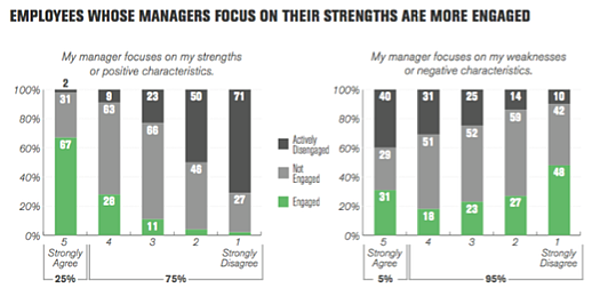Here’s the thing: You might be giving your direct reports lots of autonomy. Or, you’ve got your finger on the pulse of everyone on the team.
Management isn’t 1 size fits all. Sometimes, you want to check in on the employee. Other times, you'd best to stay out.
Pick the wrong managerial approach, and your employees' morale will nose-dive. That'll result in limping performance and attrition.
Don’t stress.
You’re about to learn how to max out your management skills that will make Steve Jobs’ hologram blush with envy.
Stick to task relevant maturity (TRM)
I love working with my direct manager. His management style is top-notch.
That’s what you want your staffers to say. And if you intro "Task Relevant Maturity (TRM)" into how you manage employees, it’ll be a reality.
Now, chances are it’s not the sexiest managerial term you’ve seen. But the concept behind it is stronger than thunder’s winged force.
TRM comes from Andy Grove’s best-selling book called High Output Management. According to Grove, the late CEO of Intel and the father of OKRs, you should be either hands-on or hands-off based on employees’ comfort levels with a given task.
With top performers who can do the job in their sleep, you want to unplug and minimize involvement in their work. In other words, focus on outcome vs. micromanagement.
With staffers who spin their wheels and struggle to get things done, spend every ounce of your energy to get them up to speed. Otherwise, they will grow frustrated and will be more likely to jump ship.
The trade-off of sticking to TRM? Engagement boost.
As Piotr Sosnowski, head of HR and co-founder at ResumeLab, puts it: "A+ players will appreciate you chose to lean on their strengths. And struggling employees will appreciate your effort to grow their muscles."
Good news? You’re a quick scroll down from learning how to implement TRM into your management style.
Do a team-wide performance evaluation
Now, you’ve made it to the juicy part. It’s time to figure out where your direct reports stand on the TRM spectrum.
Best way to do it? Assess employees’ performance for core responsibilities within their roles. It’ll help you understand how hands-on or hands-off you need to be.
Low performance:
If the direct report spins their wheels to get the job done, provide detailed feedback and a ton of coaching.
Medium performance:
If the direct report’s overall performance is OK, but there's room for improvement, provide advice on how to get better but don’t be too hands-on. Emphasize communication and mutual reasoning.
High performance:
If the direct report can do the job of 3 while juggling a bunch of apples, unplug and give him/her as much autonomy as possible. Set up goals and track KPIs.
Once you’ve scored direct reports for performance, you can adjust your management style accordingly.
Pro tip: Do a team-wide performance evaluation each quarter and recalibrate how hands-on or hands-off you’re with every member on the team.

Put things into action
So far, so good.
You know which direct reports need your help the most. Now, you need to spend every ounce of your energy to support them.
Here’s how:
Schedule 1-on-1s
These are a great way to dish out wisdom and clear potential roadblocks.
For top performers, set up a recurring, once-a-month meeting for 60 minutes. For mid-range performers, meet every 2 weeks for 45-60 minutes. Struggling direct reports need your help the most, so meet every week for 30-60 minutes.
Need tips on how to run killer 1-on-1s? Check this guide.
Introduce a personal development fund
I get it. As a manager, you’ve got lots of plates to spin, so you might not have time to meet with staffers often enough.
Good news? You can introduce a personal development fund and let low- and mid-performers improve their limping skills they can later put on their resume.
Here’s how it works:
You set an annual budget (e.g., $5,000) for direct reports who need support. In turn, they can use a portion of that money to get better at their job.
Below are 3 ideas on how staffers can use the budget:
● Get mentorship from an industry expert
● Get signed up for an online course
● Attend a workshop in the area
About the author
Max Woolf is a writer at ResumeLab. He’s passionate about helping people land their dream jobs through the expert career industry coverage. In his spare time, Max enjoys biking and traveling to European countries. You can hit him up on LinkedIn.
Need extra “dough” for the holidays. Did you know that Keap has a referral program? Check out how you can fatten your wallet before the holidays🎁 . https://t.co/pHIEOTv1wX pic.twitter.com/siwEUfnMDk
— Keap (@KeapGrowing) October 12, 2019



